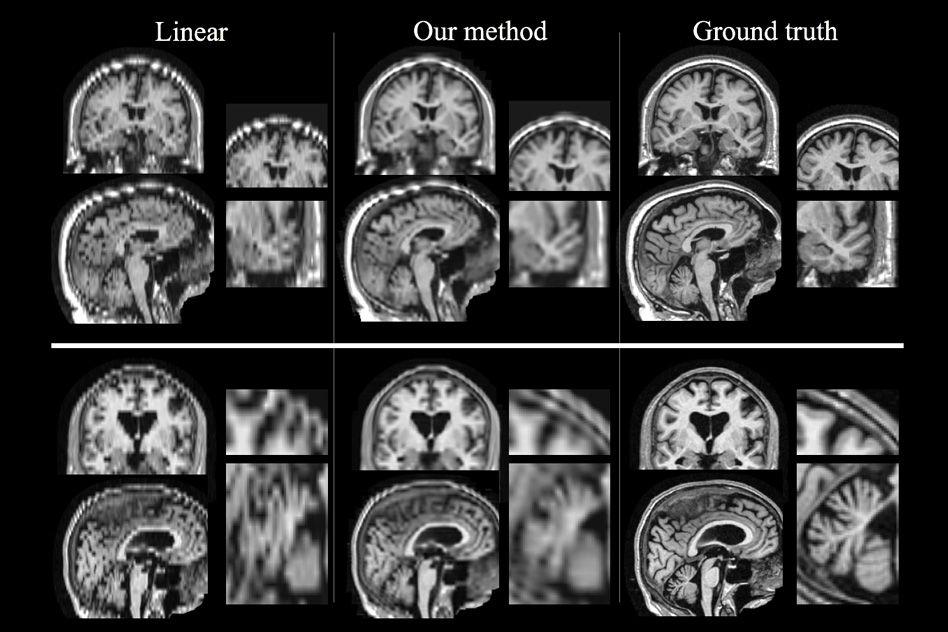Why does your mind go blank at the worst possible moments? New brain scans are shedding light on this frustrating phenomenon, revealing unexpected patterns of neural activity that could explain why we sometimes draw a complete mental blank. In a recent study highlighted by Live Science, researchers used advanced imaging technology to observe the brain in real time, uncovering surprising insights into how stress, cognitive overload, and specific brain regions contribute to these sudden lapses in memory and focus. This breakthrough not only deepens our understanding of the brain’s inner workings but could also pave the way for strategies to help people overcome these mental blockages.
Understanding the Brain Mechanisms Behind Mental Blanks
Recent advances in neuroimaging have peeled back the layers of mystery surrounding those moments when our minds unexpectedly go silent. Scientists have pinpointed that during a mental blank, there is a temporary disruption in communication between the prefrontal cortex and the hippocampus-two critical regions responsible for working memory and information retrieval. Functional MRI (fMRI) scans show reduced neural activity in these areas, suggesting that the brain’s executive functions are momentarily impaired. This breakdown impacts our ability to access stored information, creating the frustrating sensation of a ‘blank mind’ often experienced during high-pressure situations such as exams or public speaking.
Further exploration revealed intriguing patterns within the brain’s default mode network (DMN), a system typically active during rest and self-referential thought. When a mental blank occurs, the DMN exhibits heightened, yet maladaptive, activation that seems to interfere with focused cognitive processing. This paradoxical activity essentially causes the brain to get ‘stuck’ in a loop, preventing smooth transitions to task-oriented states. Key findings summarized below highlight the neural shifts involved:
| Brain Region | Normal Function | Activity During Mental Blank |
|---|---|---|
| Prefrontal Cortex | Executive control and decision-making | Decreased activity; disrupted coordination |
| Hippocampus | Memory retrieval and consolidation | Reduced signal transmission |
| Default Mode Network | Rest and introspective thought | Increased but maladaptive activation |
- Breakdown in crucial neural connectivity
- Mismatch between task-positive and task-negative networks
- Transient cognitive ‘disengagement’ despite external demands
How New Neuroimaging Techniques Uncover Cognitive Interruptions
Recent advancements in neuroimaging have transformed our understanding of those frustrating moments when the mind suddenly blanks. Cutting-edge techniques, such as high-resolution functional MRI and magnetoencephalography (MEG), allow scientists to observe brain activity in real-time with unprecedented detail. These tools reveal that cognitive interruptions are not random glitches but arise from dynamic shifts in neural network connectivity. Specifically, disruptions in communication between the prefrontal cortex-responsible for executive function-and the default mode network, which governs mind-wandering, appear to underpin these lapses.
By mapping these brain states, researchers have identified key factors that trigger the ‘blank mind’ phenomenon, including:
- Overload of competing information that overwhelms the working memory system
- Transient suppression of attention-related circuits, reducing focus
- Unexpected external distractions causing rapid shifts in brain synchronization
| Brain Region | Role in Blank Mind |
|---|---|
| Prefrontal Cortex | Attention control and decision-making |
| Default Mode Network | Self-referential thought and mind-wandering |
| Anterior Cingulate Cortex | Error detection and conflict monitoring |
Practical Strategies to Overcome Mind Blanks and Improve Focus
When your mind goes blank, it’s often a sign that your brain’s executive functions are overloaded or momentarily disengaged. To counteract this, experts recommend implementing focused breathing techniques and deliberate pauses during mentally demanding tasks. These methods help recalibrate neural pathways by reducing stress-induced activation of the default mode network, which studies show can cause mind blanks during high-pressure situations. Additionally, breaking work into smaller, manageable chunks activates the prefrontal cortex more effectively, improving concentration and enabling smoother transitions between tasks.
Incorporating simple yet effective habits can make a significant difference in sustaining focus throughout the day. Consider these key strategies to sharpen mental clarity and prevent lapses:
- Mindful breathing: Practicing deep, controlled breaths for 2-3 minutes clears cognitive clutter.
- Scheduled micro-breaks: Taking short breaks every 25-30 minutes boosts long-term productivity.
- Eliminating distractions: Use noise-canceling headphones or apps to block out disruptive stimuli.
- Hydration and nutrition: Staying hydrated and balanced blood sugar levels support optimal brain function.
| Strategy | Primary Benefit | Recommended Duration |
|---|---|---|
| Focused Breathing | Reduces anxiety & restores attention | 2-3 minutes |
| Micro-Breaks | Prevents cognitive fatigue | 5 minutes every 25-30 minutes |
| Distraction Management | Enhances sustained focus | Continuous |
| Balanced Nutrition | Maintains energy & brain health | Daily |
Key Takeaways
As recent brain scans illuminate the neural mechanisms behind the elusive “blank mind” phenomenon, scientists are gaining unprecedented insight into how our brains respond under pressure. These findings not only deepen our understanding of cognitive function but may also pave the way for new strategies to manage stress and enhance mental performance. As research continues, what once seemed like a frustrating lapse in memory could soon be decoded, offering hope to those who struggle with moments when their minds suddenly go blank.
